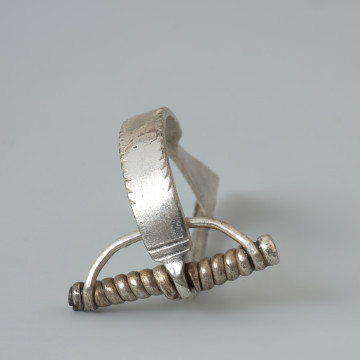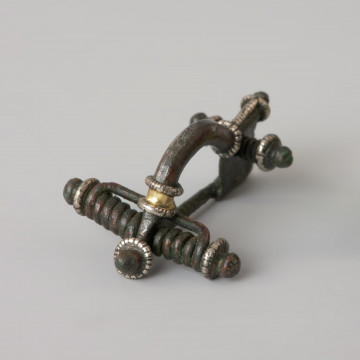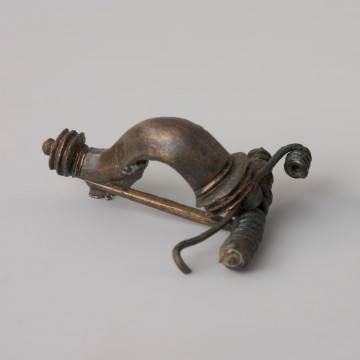
Tortoiseshell buckle
National Museum in Szczecin
Part of the collection: Antiquity
This brass fibula has an element characteristic for this type of objects, the so-called “hood”. It is a specially shaped element that covers the spring at the top. Such fibulae form a separate design group, identified by scholars as originating in the Elbe region and dated to the 1st-2nd century. The Szczecin specimen is also distinguished by a detail equally important for its chronology, namely a horizontal rib on the top side of the bow, called a crest. Between the crest and the hood there is an engraved ornamental motif. Such fibulae were not just used as jewelry. They served a purely practical purpose, being used to fasten garments and join different pieces of clothing. They were also used to attach neck-rings, which were worn on clothing rather than around the neck like today’s necklaces. Women usually wore a minimum of two fibulae, most commonly two to four. The fibulae are one of the most important monuments of the Roman period. There are many different types of fibula designs and each of them can be assigned with a specific time period. Determining the type of fibula often allows establishing the chronology of the entire assemblage, for example, of grave goods. The presented fibula comes from the cemetery of the Wielbark culture in Siecie town, poviat Słupsk, discovered by accident in spring 1897 during earthworks. The archives preserved to this day at the National Museum in Szczecin, concerning the circumstances of the discovery of the cemetery and the exploration of the objects, are not sufficient to connect the monuments to the specific grave groups. It is only known that the cemetery was bi-ritual, containing both cremated and inhumated burials. This is typical of the rituals of the people of the Wielbark culture.
Bartłomiej Rogalski
Author / creator
Dimensions
cały obiekt: height: 3.3 cm, width: 4.2 cm
Object type
pin (fastener)
Technique
casting
Material
bronze
Creation / finding place
Owner
Muzeum Narodowe w Szczecinie
Identification number
Location / status

National Museum in Szczecin

National Museum in Szczecin

National Museum in Szczecin
DISCOVER this TOPIC
National Museum in Szczecin
DISCOVER this PATH
Educational path